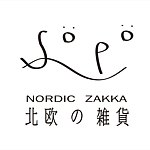4 cups containing a full set of four
Ceramic hand-drawn line
As a general pattern can not easily copy paste
Require technical mastery of painting division
Step by step, focused, faithfully presenting the designer's idea
Several points, several lines in the middle of the pitch, the angle
Must have a full grasp
In Sweden found an extremely delicate antique shop
Miss Sweden was very kind to us about the origins of this set of cups and saucers
Although it is something 1950
But very good state of preservation
Classical pattern will not be too complicated
Disc diameter 14.5cm
Cup high 7.5cm diameter 7.5cm
1929 ~ 1945 production
Is very lucky preserved rare old pieces before and after World War II
Cobalt blue painted lines very viable
Goblet body is particularly
Thin white porcelain body with a very delicate texture
Eschenbach porcelain factory located in Bavaria, Germany
Technology transfer in the Second World War, visibility, once disappeared
Then changed hands several times
We can see it from the bottom of the cup before and after World War II, yet easy to master factory emblem
Eschenbach porcelain is mostly produced in classical style
But this particular pieces of hand-painted cobalt blue lines
By Ms. Swedish antique collection
Indeed Nordic-loved and feel very simple geometry related
Origin / manufacturing methods
Germany
Ceramic hand-drawn line
As a general pattern can not easily copy paste
Require technical mastery of painting division
Step by step, focused, faithfully presenting the designer's idea
Several points, several lines in the middle of the pitch, the angle
Must have a full grasp
In Sweden found an extremely delicate antique shop
Miss Sweden was very kind to us about the origins of this set of cups and saucers
Although it is something 1950
But very good state of preservation
Classical pattern will not be too complicated
Disc diameter 14.5cm
Cup high 7.5cm diameter 7.5cm
1929 ~ 1945 production
Is very lucky preserved rare old pieces before and after World War II
Cobalt blue painted lines very viable
Goblet body is particularly
Thin white porcelain body with a very delicate texture
Eschenbach porcelain factory located in Bavaria, Germany
Technology transfer in the Second World War, visibility, once disappeared
Then changed hands several times
We can see it from the bottom of the cup before and after World War II, yet easy to master factory emblem
Eschenbach porcelain is mostly produced in classical style
But this particular pieces of hand-painted cobalt blue lines
By Ms. Swedish antique collection
Indeed Nordic-loved and feel very simple geometry related
Origin / manufacturing methods
Germany




